The Biological Basis of Human Behavior accomplishes what numerous introductory books have failed to do: present an evolutionary explanation of why it is we do what we do. This comprehensive book brings together a diverse number of traditionally separate disciplines including paleoanthropology, psychology, and sociology in its attempt to understand human traits. Rich in controversial topics, this text integrates subjects such as paleontology, speech, the structure of the brain, Eve, and the rather odd way in which humans reproduce. Written as a narrative, this excellent learning tool relates modern behavior to the past environments, stresses, and challenges still evident in the modern human world. For anyone interested in the biological bases of human behavior; psychology; or anthropology.
Biological Bases of Human Behavior, The 1st Edition
KSh 7,420.00
The Biological Basis of Human Behavior accomplishes what numerous introductory books have failed to do: present an evolutionary explanation of why it is we do what we do. This comprehensive book brings together a diverse number of traditionally separate disciplines including paleoanthropology, psychology, and sociology in its attempt to understand human traits. Rich in controversial topics, this text integrates subjects such as paleontology, speech, the structure of the brain, Eve, and the rather odd way in which humans reproduce. Written as a narrative, this excellent learning tool relates modern behavior to the past environments, stresses, and challenges still evident in the modern human world. For anyone interested in the biological bases of human behavior; psychology; or anthropology.
1 in stock
Related products
-
Courage And Confidence
KSh 750.00Norman Vincent Peale’s anthology includes the works of inspired writers, the thoughts of great men, and anecdotes about remarkable people. From The Bible to Shakespeare, Theodore Roosevelt to Helen Keller, George Eliot to Walt Whitman, the result is truly a treasury of courage and confidence. The material in this book is arranged in twelve sections. Each offers a different approach to dealing with concerns such as: how to banish fear; loving and being loved, the art of thankfulness, the power of prayer and how to find happiness. There is something for everyone in the anthology. Like Norman Vincent Peal’s bestseller The Power of Positive Thinking, it will guide you toward peace of mind and the will to live the fullest possible life.
-
Reading and Understanding Research Third Edition by Lawrence F. Locke (Author), Stephen Silverman (Author), Waneen W. Spirduso (Author)
KSh 10,500.00Ideal for students, novice researchers, or professionals, this indispensable resource serves as a road map for readers who need to analyze and apply research findings. It helps them think critically about the credibility of what they are reading by showing them how to identify problems and develop constructive questions.
Key Features
- Assumes no prior knowledge of research procedures
- Provides readers with a step-by-step format for decoding the complex language and formats used in reports and reviews
- Includes the most common formats for both quantitative and qualitative inquiry
- Offers both illustrative examples and powerful training exercises
- Gives specific attention to strategies for critically appraising reported research
- Presents completely updated references as well as an annotated bibliography
Intended Audience
This text is appropriate for both upper-level undergraduate and graduate students across the social sciences enrolled in introductory research courses as well as students in professional preparation programs.
Available with Perusall—an eBook that makes it easier to prepare for class
Perusall is an award-winning eBook platform featuring social annotation tools that allow students and instructors to collaboratively mark up and discuss their SAGE textbook. Backed by research and supported by technological innovations developed at Harvard University, this process of learning through collaborative annotation keeps your students engaged and makes teaching easier and more effective. -
Food Safety and Inspection An Introduction
KSh 7,000.00The process of food inspection relies on an inspector’s understanding of the intrinsic hazards associated with individual foods. Whereas spoilage can usually be determined through a simple organoleptic assessment, the judgment of whether a food is fit for human consumption requires an evaluation of health hazards, many of which may not be apparent through physical assessment. Instead the inspector must analyse and integrate scientific and handling information to evaluate the potential health risk. Adulteration of foods is also becoming an increasing problem, and the complexity of the food supply chain requires an understanding of risk points to allow targeted inspection and assessment.
Food Safety and Inspection: An Introduction focuses on food categories and describes common hazards associated with each, using published peer-reviewed research to explain and evaluate the health risk. It is a practical textbook designed to support the role of food inspection in a modern food industry. There are seven chapters looking at specific aspects of food safety, including a chapter on fraud and adulteration.
This book summarises relevant published research to provide a scientific context for specific food safety issues, and is an essential read for anyone interested in becoming a food inspector.
-
Social Work and Mental Health (Transforming Social Work Practice Series)
With 1 in 4 people experiencing a mental health problem in any given year, mental health is a more important part of social work training than ever before, and all successful social workers need to understand the core values, skills and knowledge that underpin excellent practice in a modern mental health system.
Written as an accessible introduction to the complex issues around mental health, this book has become a classic in its field. Law and policy are clearly outlined while the authors give space to important ethical considerations when working with the most vulnerable in society. There are clear links between policy, legislation and real life practice as well as a wealth of learning features.
-
Gray’s Anatomy for Students-5th Edition
KSh 14,014.00Concise, readable text and an outstanding art program make Gray’s Anatomy for Students, 5th Edition, your go-to text for essential information in human anatomy. This fully revised volume focuses on the core information medical students need to know, in an easy-access format and with additional multimedia content to facilitate effective study and mastery of the material. A team of expert authors share a wealth of diverse teaching and clinical experience—all enhanced by more than 1,000 innovative, original illustrations by renowned illustrators Richard Tibbitts and Paul Richardson, who capture anatomical features with unrivalled clarity.
Key Features
- Helps you understand the practical applications of anatomical concepts through unique coverage of surface anatomy, correlative diagnostic images, and clinical case studies.
- Contains increased representation of diverse population groups throughout, incorporating a wider range of skin tones and important clinical considerations related to transgender and intersex individuals.
- Presents anatomy logically by body region – as well as bonus updated eBook chapters for each major body system to facilitate learning from a different perspective.
- Includes new and improved online materials such as self-assessment questions, medical and physical therapy clinical cases, a unique Interactive Surface Anatomy tool, and more.
- Provides fully revised and updated clinical content including numerous new In the Clinic boxes, images, and correlates throughout that reflect the latest advances seen in clinical practice. New and updated Clinical Cases are included in the accompanying enhanced eBook.
- Features an updated neuroanatomy eBook chapter, so you can learn key aspects of this challenging topic in the context of general anatomy.
Improves comprehension of complex cranial nerves with a visual map summarizing cranial nerve distribution and function. - Offers schematic drawings for key structures and topics in every chapter, providing an additional, simplified approach to introduce each topic—ideal for quick initial understanding and as a guide for your own anatomy drawings.
- Enables you to quickly review the basic concepts from each chapter with Conceptual Overviews.
- An eBook version is included with purchase. The eBook allows you to access all of the text, figures and references, with the ability to search, customize your content, make notes and highlights, and have content read aloud.
Evolve Instructor site with a downloadable image bank is available to instructors through their Elsevier sales rep or via request at https://evolve.elsevier.com.
-
Heart Disease: Everything You Need to Know (Your Personal Health)
KSh 900.00Widespread and deadly, heart disease is a grim epidemic. Affecting parents, siblings, friends and co-workers, heart disease is so common that it is impossible to remain untouched by it. Heart disease is responsible for more than 37% of all deaths and is the leading cause of death in people over 65.
In Heart Disease, Dr. Rob Myers shows how to take control of the condition. For example, of the 50 million Americans who suffer from high blood pressure — the leading contributor to heart disease — only 35% know they have it. Yet, high blood pressure is easily detectable and usually controllable.
Heart Disease is a practical health guide that simplifies this disease’s biology and physiology and clearly explains the medial concepts and jargon often used by doctors in diagnosis and treatment.
Using detailed tables, sidebars and diagrams, Heart Disease provides comprehensive, accurate, safe and up-to-date information for patients and their families.
-
-
Guidelines for drinking-water quality, 4th edition, incorporating the 1st addendum
The fourth edition of the World Health Organization’s (WHO) Guidelines for drinking-water quality (GDWQ) builds on over 50 years of guidance by WHO on drinking-water quality, which has formed an authoritative basis for the setting of national regulations and standards for water safety in support of public health.
It is the product of significant revisions to clarify and elaborate on ways of implementing its recommendations of contextual hazard identification and risk management, through the establishment of health-based targets, catchment-to-consumer water safety plans and independent surveillance.
This first addendum updates the fourth edition. Updates reflect new evidence and further, provides additional explanations to support better understanding and application of the guidance.

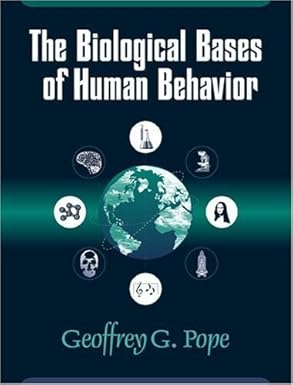

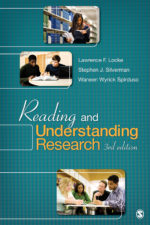
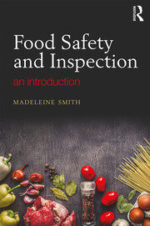
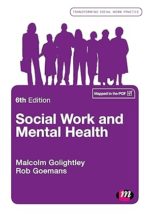

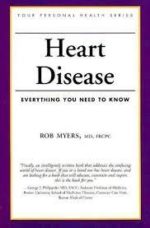
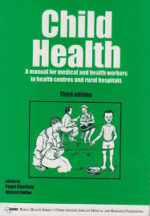
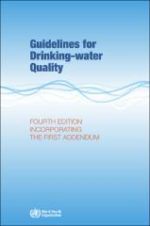
Be the first to review “Biological Bases of Human Behavior, The 1st Edition”